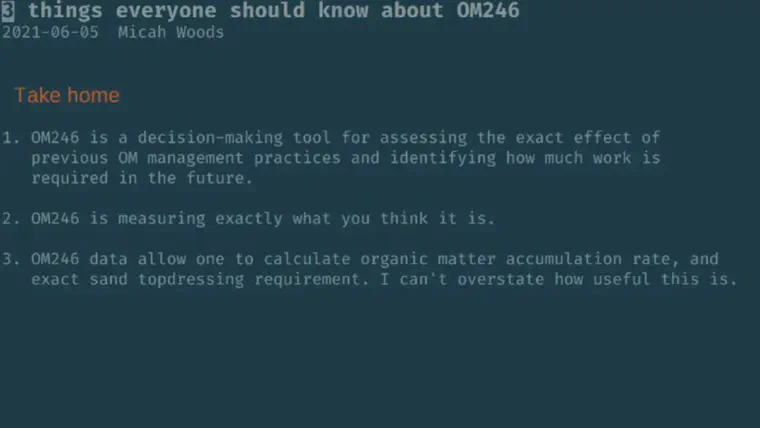Total organic material accumulation rate and sand topdressing requirement
When the total organic material is known at time A and at time B, the accumulation rate can be calculated. By accounting for the sand that was applied between time A and time B, another accumulation rate can be calculated: the organic matter accumulation rate independent of sand application.

I demonstrated this “killer feature” of OM246 testing in episode 6 of the Grammar of Greenkeeping show.
The role of sand is important in calculating the accumulation rate. Imagine a scenario where the total organic material in the top 2 cm was 6% on 1 June 2020 (time A) and was also 6% on 1 November 2020 (time B). The OM2 did not change.
But what if this same result were measured at two different locations? At the first location, 2 mm of sand was applied between time A and time B; at the second location 6 mm of sand was applied. It’s apparent that the underlying accumulation rate of OM is higher at the second location.
That’s what these calculations do going back in time, and then going forward they make a prediction of the topdressing requirement to achieve a user-selected value for total organic material in the soil.
The OM246 Shiny app makes these calculations.